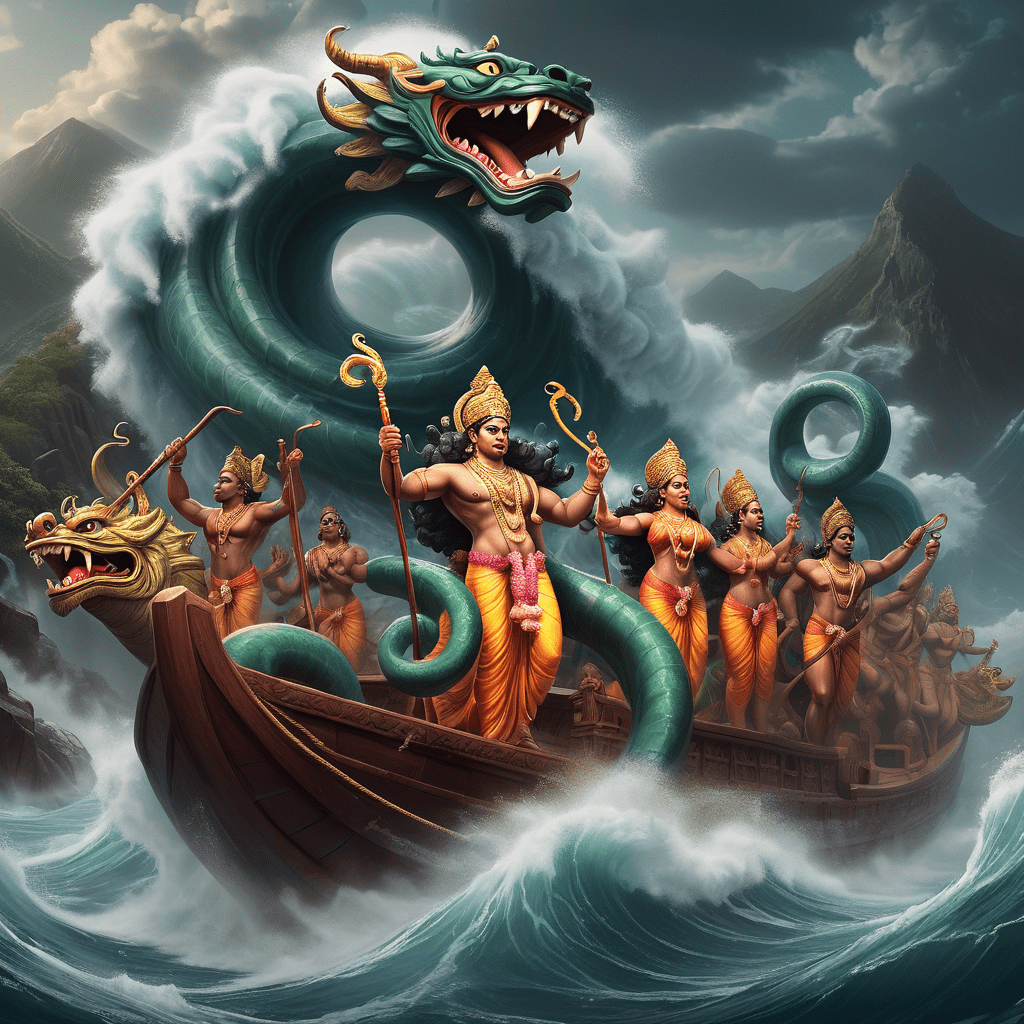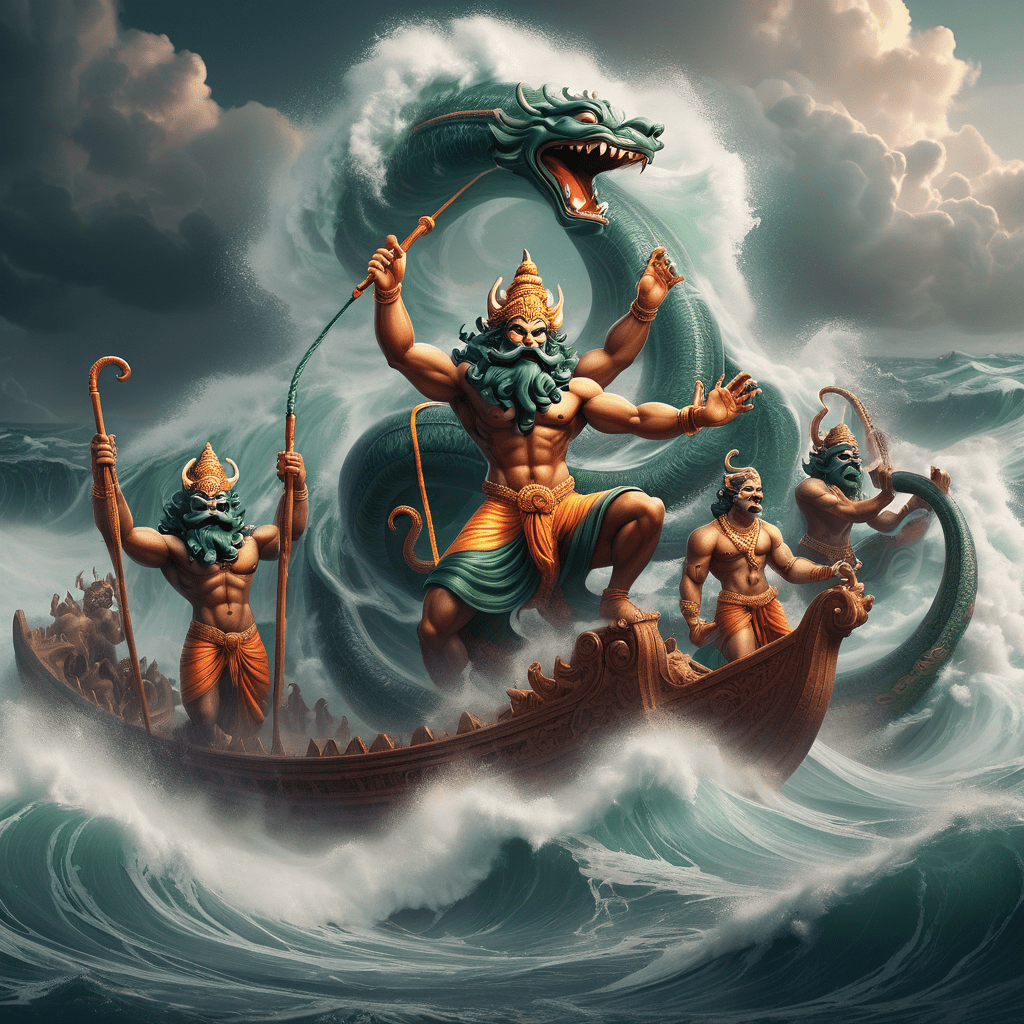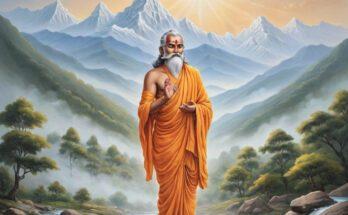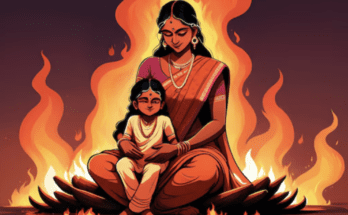In the vast and timeless expanse of Hindu mythology, there exists a tale as old as creation itself, teeming with intrigue, divine intervention, and profound moral lessons. This is the story of the Churning of the Ocean, or Samudra Manthan, a legendary event that brought gods and demons together in a quest for the nectar of immortality, Amrita. The narrative, deeply woven into the cultural and spiritual fabric of India, illustrates the cosmic dance between good and evil, and the eternal pursuit of balance and harmony.
The Epic Tale of Samudra Manthan: The Gods, the Demons, and the Quest for Immortality
Long ago, in an age shrouded in the mists of time, the Devas (gods) and Asuras (demons) found themselves at odds, as was often the case in their eternal struggle. The Devas, led by the mighty Indra, were the upholders of cosmic order, while the Asuras, led by the powerful Bali, constantly sought dominion over the universe. This time, however, the Devas faced a dire predicament. Due to a curse from the sage Durvasa, known for his quick temper, the Devas had lost their divine strength and vitality. This left them vulnerable, unable to protect the universe from the encroaching chaos of the Asuras.
Seeking a solution, the Devas turned to the preserver of the universe, Lord Vishnu. With his deep wisdom and calm demeanor, Vishnu proposed an audacious plan: the churning of the ocean of milk, the Kshira Sagara, to obtain Amrita, the nectar of immortality. This divine nectar, once consumed, would restore the Devas’ strength and ensure their victory over the Asuras. However, Vishnu’s plan required a temporary alliance with their adversaries, the Asuras, as the task at hand was too monumental for the Devas alone.

Reluctantly, a truce was established, and the two rival factions gathered at the shores of the cosmic ocean. The process required two key elements: a churning rod and a rope. Mount Mandara, a towering and sacred mountain, was chosen as the churning rod, while the great serpent Vasuki, renowned for his immense size and power, was to serve as the churning rope.
Here, Lord Vishnu, ever the strategist, played a crucial role. Understanding the dynamics of pride and perception, he subtly suggested to the Devas that they should take the head side of Vasuki, leaving the tail to the Asuras. However, the Asuras, brimming with arrogance and convinced of their superiority, insisted on holding the head of the serpent. They believed that holding the head was a sign of respect and dominance, relegating the Devas to the lower position at the tail. Unbeknownst to them, this decision would prove to be a double-edged sword.
As the churning began, the Devas and Asuras strained against Vasuki, causing Mount Mandara to start sinking into the depths of the ocean. Seeing the dilemma, Vishnu manifested as Kurma, the colossal turtle, to support the mountain on his back, ensuring the stability needed for the churning to continue. With Kurma providing the foundation, the Devas and Asuras resumed their efforts, pulling Vasuki back and forth with all their might.
As the churning intensified, the Asuras began to suffer the consequences of their choice. From Vasuki’s hood emanated poisonous fumes, which began to weaken and distress them. The Devas, positioned at the tail, were spared this ordeal, a turn of events that balanced the inherent disparities in their strengths.
The churning of the ocean brought forth a series of miraculous and sometimes dangerous results. The first to emerge was a potent poison called Halahala, a substance so toxic that it threatened to annihilate all creation. In their desperation, the Devas and Asuras turned to Lord Shiva, the destroyer of the universe, for salvation. Shiva, with his boundless compassion and courage, consumed the poison to protect the cosmos. His throat turned blue from the poison’s effects, earning him the epithet Neelkanth, the blue-throated one. Yet, Shiva held the poison in his throat, sparing the world from its deadly force.

With the danger averted, the churning continued, revealing a bounty of celestial treasures and beings. From the depths of the ocean emerged Kamadhenu, the divine cow that granted every wish; the Parijata, the celestial tree of paradise; Airavata, the magnificent white elephant destined to serve Indra; and the beautiful Apsaras, enchanting celestial nymphs. These were divided among the Devas and Asuras as agreed upon before the churning began.
Then came the emergence of Lakshmi, the goddess of wealth and prosperity, who chose Lord Vishnu as her eternal consort. Finally, the most coveted item appeared: Dhanvantari, the divine physician, holding the precious pot of Amrita. The sight of the nectar of immortality sent a wave of excitement and greed through the assembled beings. The Asuras, overwhelmed by their desire for immortality, seized the pot and refused to share it with the Devas.
A fierce struggle ensued, with both factions vying for control of the precious nectar. Just as it seemed the Asuras would claim victory, Lord Vishnu, ever the master of strategy, intervened. He assumed the beguiling form of Mohini, an exquisite enchantress of incomparable beauty. As Mohini, Vishnu approached the Asuras with a proposal to fairly distribute the Amrita.
The Asuras, mesmerized by Mohini’s allure and confident in their superiority, agreed to her terms. Mohini took the pot of nectar and began to serve it, but she cleverly ensured that only the Devas received the Amrita. The Asuras, blinded by their infatuation, failed to notice the deception until it was too late.
However, one Asura, Swarbhanu, cunningly disguised himself as a Deva and managed to consume a few drops of the nectar. The Sun and the Moon, recognizing the impostor, alerted Mohini. In response, Mohini swiftly beheaded Swarbhanu with the Sudarshan Chakra, her divine discus. But by then, the nectar had reached his throat, granting him immortality. Thus, Swarbhanu’s head became known as Rahu, and his body as Ketu. Both parts achieved immortality and became celestial entities, known in Hindu astrology as shadow planets, responsible for eclipses as they eternally chase the Sun and Moon in revenge.
With the Devas having consumed the Amrita, they regained their divine strength and vigor. The cosmic balance was restored, and the temporary truce dissolved. The Asuras, now powerless against the rejuvenated Devas, retreated, accepting their defeat. The churning of the ocean had achieved its purpose, bringing forth both divine treasures and important lessons.
The story of the Churning of the Ocean, or Samudra Manthan, is more than a myth; it is a rich tapestry of symbolism and teachings. It illustrates the interplay between pride and humility, the consequences of choices, and the eternal struggle between good and evil. The churning process itself symbolizes the constant struggle and effort required to achieve enlightenment and purity. Just as the ocean yielded both poison and nectar, so does life present us with challenges and rewards, both of which must be navigated with wisdom and grace.
In the end, the Devas’ humility and wisdom, guided by Vishnu’s strategic mind, triumphed over the Asuras’ arrogance and greed. The story reminds us that true power lies not in physical might or wealth but in the virtues of wisdom, humility, and righteousness. The tale also underscores the importance of balance and cooperation, even with those we perceive as adversaries, for the greater good.
Today, the legend of the Churning of the Ocean continues to inspire and teach. It serves as a metaphor for the human journey, the quest for spiritual growth, and the pursuit of immortality—not in a literal sense, but through the enduring legacy of our actions and virtues. As we churn through the oceans of our own lives, may we strive to extract the nectar of truth, wisdom, and compassion, ever mindful of the lessons from this ancient, cosmic tale.
Dibhu.com is committed for quality content on Hinduism and Divya Bhumi Bharat. If you like our efforts please continue visiting and supporting us more often.😀
Tip us if you find our content helpful,
Companies, individuals, and direct publishers can place their ads here at reasonable rates for months, quarters, or years.contact-bizpalventures@gmail.com





